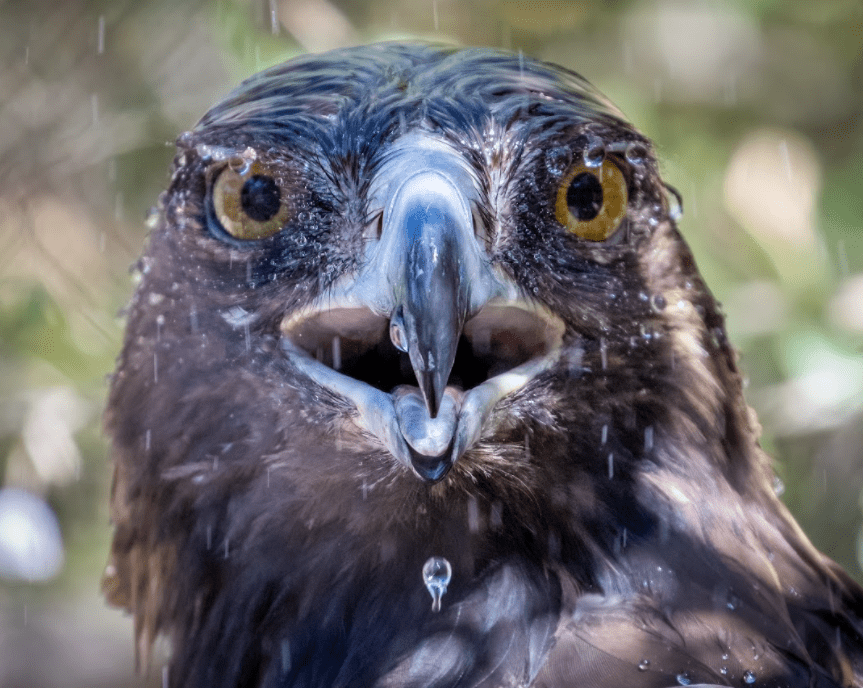Golden Eagle
Aquila chrysaetos
Mighty Hunters
The largest raptors in North America; golden eagles are mighty hunters. Eyes take up most of the space in their heads, allowing them to see great distances in high detail. They can reach speeds up to 120 miles per hour during a dive. The combination of excellent eyesight, swift flight and sharp talons make them successful and versatile predators. Golden eagles are opportunistic and will eat reptiles, fish, birds and carrion. Their preferred meal is small to medium-sized mammals, but they are capable of killing prey larger than themselves including deer, bighorn sheep, seals and coyotes.
Making a Statement
Golden eagles are found throughout the Northern Hemisphere, from Mexico to Alaska, as well as in Europe, Asia and parts of North Africa. Their large range and historic presence have cemented their high status in varied cultures and mythologies. With their impressive hunting abilities, intimidating size and majestic flight skills, it’s no wonder they are a symbol of power and courage across their range. The golden eagle is the national bird of five countries – Albania, Germany, Austria, Mexico and Kazakhstan – making it the most common national animal in the world.
Golden Eagle Conservation
The golden eagle’s hunting prowess has, unfortunately, also led to its decline. The perceived threat to a rancher’s livelihood is often enough incentive to initiate eradication measures, even though actual instances of livestock killing are rare. Today, the main threat is habitat loss. Wind farms, urban development, and accidental poisoning from bait traps have led to a slow, yet steady decline in golden eagle population numbers. Current conservation efforts seek to understand the eagles’ flight paths and breeding needs in order to predict the best locations for energy farms that have the least interference in the lives of golden eagles.

Diet: mammals, fish, birds, large insects, reptiles
Zoo Diet: specialized carnivore diet, whole prey, fish
Habitat: grasslands, mountains, wetlands, chaparral
Wingspan: 75 – 90 in

Plan your visit today!
The Phoenix Zoo is one of the largest non-profit zoos in the U.S., caring for over 3,000 animals, with nearly 400 species represented, including many threatened/endangered species.

Plan your visit today!
The Phoenix Zoo is one of the largest non-profit zoos in the U.S., caring for over 3,000 animals, with nearly 400 species represented, including many threatened/endangered species.








